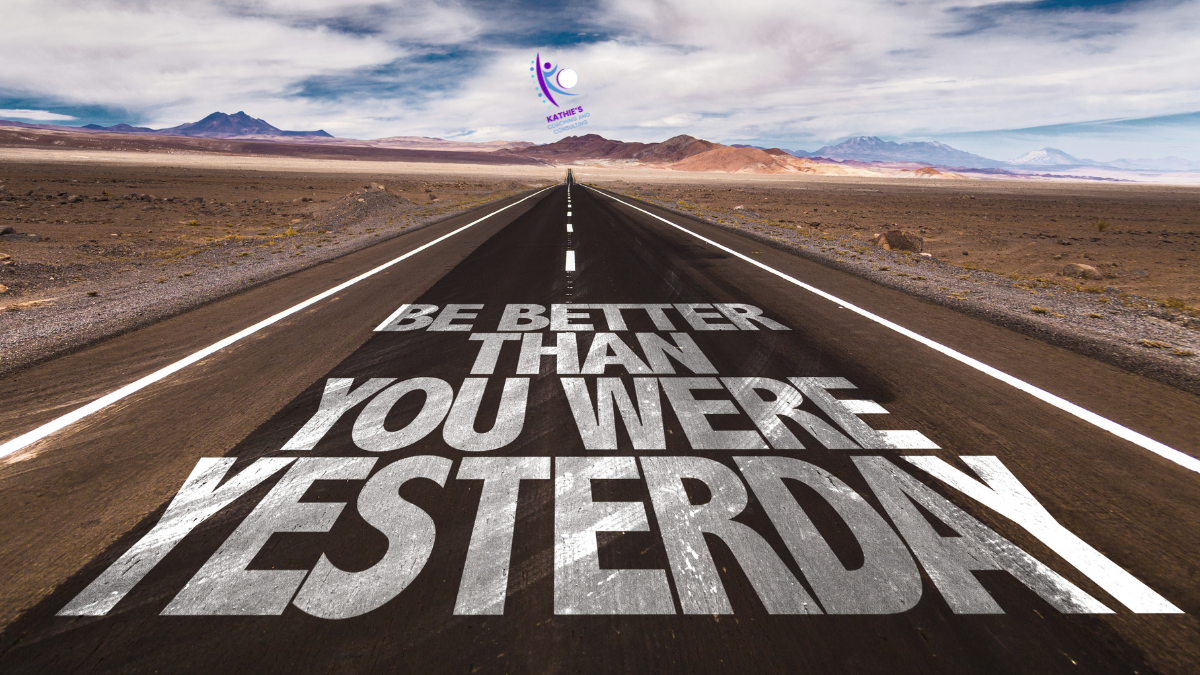How Charisma Can Make You a Better Leader
Charisma Myth and Leadership
Leadership is not just about decision-making, strategy, or the ability to deliver results.
In today’s workplace, it's increasingly about how leaders make others feel. In my Top Workplace Wellness leadership and communication programs, one of the key tools I teach is rooted in the concepts from Olivia Fox Cabane's game-changing book, The Charisma Myth.
This book unpacks the idea that charisma is not an innate trait, as many believe, but a skill anyone can develop.
And in the world of corporate wellness, mastering charisma can make a huge difference.
Charisma Myth and Leadership
Lack of Influence can Affect Culture
Having worked as a corporate wellness director for over a decade, I've witnessed firsthand how a leader’s charisma—or lack thereof—can shape workplace culture, influence employee engagement, and even impact team productivity.
I’m also someone who has been diagnosed with Complex PTSD (C-PTSD), and that’s been both a challenge and an asset. It’s allowed me to become especially adept at reading people’s microexpressions—those subtle, often subconscious signs that reveal so much about a person’s feelings and intentions. Read about my superpower here!
These insights align beautifully with the three pillars of charisma described in The Charisma Myth: Power, Presence, and Warmth.
Blog Post Continued Below…..
Watch the video on YouTube (subscribe while you are there!)
Listen to the episode on Kathie’s Coaching Podcast (subscribe while you are there!)
Charisma Myth and Leadership
Power, Presence, and Warmth: The Charisma Trifecta
The idea that charisma can be broken down into three key components—Power, Presence, and Warmth—gives leaders a practical roadmap to develop their leadership style. Let’s break these down.
Power: This isn’t just about being in a position of authority. Power, in the charismatic sense, is about conveying confidence and competence.
It’s about making people feel like you know what you're doing and can handle whatever comes your way. As a corporate wellness leader, I see this as the foundation of leadership. Without a sense of power, it’s difficult for others to trust your decisions or your guidance.
Presence: Being present means giving your full attention to the moment. It’s about listening—truly listening—not just waiting for your turn to speak.
In my wellness programs, I often emphasize the importance of presence in leadership. When employees feel seen and heard, they are more engaged and more likely to perform well. In today’s distraction-filled workplace, cultivating presence is more important than ever.
Warmth: Warmth is about making others feel comfortable and valued. It’s a softer, more emotional aspect of charisma but equally critical.
Leaders who show warmth create trust and foster strong relationships. This is where emotional intelligence comes into play, and in a wellness context, it's key to fostering a supportive and positive workplace environment.
Charisma Myth and Leadership
How C-PTSD Heightens My Ability to Read Microexpressions
My diagnosis of C-PTSD has been a journey, and while it's come with challenges, it’s also equipped me with a unique ability to read the subtle cues that people give off.
Microexpressions—fleeting facial expressions that reveal underlying emotions—are often the truest indicators of what someone is feeling.
You’d be amazed how much you can learn about someone in just a split second of observation.
In leadership, the ability to read these microexpressions is incredibly powerful. It allows you to gauge how your team members are truly feeling, even if they’re saying something else entirely. Maybe they’re nodding along in a meeting but flashing a quick look of doubt or frustration. Maybe someone gives you a smile that doesn’t quite reach their eyes.
These small cues can tell you whether someone is genuinely engaged or if they’re just going through the motions. This is where Power, Presence, and Warmth all come together.
In fact, my heightened awareness of these microexpressions helps me stay more attuned to how I project power, presence, and warmth in my own leadership.
Am I giving off the confidence and competence that builds trust? Am I fully present with the person in front of me? Am I showing warmth in a way that makes them feel valued? I can read how others are reacting to me, adjust accordingly, and build stronger relationships as a result.
Charisma Myth and Leadership
The Charismatic Leader in Action: Connecting with Teams
Leadership and communication are at the heart of any successful corporate wellness initiative. I always tell the leaders I coach that charisma isn’t about putting on a show or pretending to be someone you’re not. It's about being fully yourself while mastering the ability to connect deeply with others.
In my experience leading wellness programs, I’ve seen how charismatic leaders can galvanize a team. I’ve also seen how a lack of charisma can lead to disengagement, misunderstandings, and even resentment.
Learn more about what a corporate wellness consultant does here!
Think about a leader who’s only focused on the “Power” component—they may come across as capable, but if they lack Presence or Warmth, their employees might see them as cold or aloof.
On the other hand, a leader who is all Warmth but doesn’t convey Power might be well-liked but not necessarily respected or taken seriously.
In corporate wellness, where the focus is on mental and physical health, charisma plays a particularly important role. Employees need to feel that their leaders care about them not just as workers, but as people.
When leaders show warmth and presence, employees feel comfortable discussing issues like stress, burnout, mental health, or physical health concerns—topics that are often difficult to bring up.
Leaders who display power can then take action, demonstrating that the company is committed to creating a healthier workplace.
Charisma Myth and Leadership
My Experience: Navigating Charisma in Difficult Work Environments
Let me take you back to my time working in a challenging corporate environment where leadership dynamics were far from ideal.
My direct supervisor consistently lacked all three elements of charisma—Power, Presence, and Warmth. Her leadership style was authoritative, rigid, and disconnected from the team’s needs. She didn’t acknowledge my ideas or even the success of the wellness initiatives I spearheaded.
This made my role difficult, but it also highlighted how crucial these components of charisma are in leadership.
Through my experience, I’ve learned that charisma doesn’t only apply to top executives. It’s a skill set that can be practiced and developed at every level of the organization.
Whether you're leading a team of five or a company of 500, the ability to project Power, Presence, and Warmth will shape how your employees engage with you—and with each other.
Charisma Myth and Leadership
How The Charisma Myth Can Transform Your Leadership
What I love most about The Charisma Myth is that it breaks down the steps to becoming a charismatic leader in a way that anyone can follow.
You don’t have to be born with it. Cabane’s book is filled with practical exercises that help you develop each component of charisma.
From practicing mindfulness (which boosts Presence) to learning how to communicate confidence even when you’re nervous (which conveys Power), these exercises are invaluable for anyone looking to improve their leadership style.
In my corporate wellness programs, I integrate these techniques with a focus on communication, emotional intelligence, and personal development.
I teach leaders how to assess their own strengths and weaknesses in Power, Presence, and Warmth, and I coach them on how to make real-time adjustments in their leadership approach based on their team’s needs.
Whether it's leading a wellness initiative, running a successful health fair, or simply improving everyday interactions with employees, charismatic leadership can significantly impact employee engagement and overall well-being.
Charisma Myth and Leadership
The Role of Charisma in Corporate Wellness
When leaders develop charisma, they naturally create a healthier, more engaged workplace. Employees are more likely to approach leaders who exude warmth, listen to those who are fully present, and trust those who project power.
This, in turn, leads to a more open dialogue about physical and mental health in the workplace—an essential component of any successful wellness program.
Charismatic leaders set the tone for a workplace culture that values both performance and well-being. They foster environments where employees feel supported, motivated, and empowered to take control of their health.
And when wellness is part of the culture, companies are more likely to attract and retain top talent, avoid burnout, and create a thriving, productive workforce.
Charisma Myth and Leadership
Final Thoughts
If you’re a leader—or aspire to be one—The Charisma Myth offers powerful lessons on how to master the art of charisma.
By cultivating Power, Presence, and Warmth, you can not only enhance your leadership skills but also create a more engaged, healthier, and happier workplace.
Whether you’re leading a wellness initiative or just looking to improve your everyday interactions, remember that charisma is not something you’re born with—it’s something you can learn and develop.
And if you’re ready to take that next step, I’d love to guide you through these principles in my Top Workplace Wellness programs.
After all, the best leaders are the ones who are always learning and growing, and developing your charisma could be the key to unlocking your full leadership potential.
About the Author:
Kathie Owen is a seasoned Corporate Wellness Consultant with over a decade of experience driving wellness initiatives.
Kathie Owen, Corporate Wellness Professional since 2012 (Our Story)
With a rich background as a certified fitness trainer and life coach since 2002, Kathie combines her practical expertise in health and wellness with a deep understanding of psychological principles, thanks to her degree in Psychology.
Her holistic approach to corporate wellness not only fosters a culture of health and engagement among employees but also supports organizations in achieving their most ambitious wellness goals.
Kathie's Coaching and Consulting reflects her passion for empowering corporate executives to create thriving workplace environments through strategic wellness programs and employee engagement.
Follow us on social media!
Read More Corporate Wellness Articles Here
Transcript | Episode 189 Kathie’s Coaching Podcast
Hello, my friend. Welcome back to top workplace wellness podcast and YouTube channel. My name is Kathie Owen. Your host and corporate wellness expert. Today, we're diving into a topic I absolutely love teaching in my corporate wellness, leadership and communication programs. And that topic is charisma. And specifically. How the concepts from the book, The Charisma Myth by Olivia Fox Cabane can totally transform your leadership styles. Be sure to check the links in the description and show notes below. To every video that I do, I always include a blog post that has bonus resources, including the book and more so be sure to check that out in the links, in the description and show notes below. You know, charisma is one of those things that people think you either have, or you don't. But what I'm here to share with you today is you can learn charisma. Charisma is skill anyone can develop. And in this episode, we are going to break down how power presence and warmth the three key elements of charisma can make you a more effective and inspiring leader. Plus I'll be sharing how my experience with complex post-traumatic stress disorder has given me unique insights into reading micro-expressions and understanding these charisma components on a deeper level. So, whether you're leading a team. Building wellness initiatives or just looking to boost your communication skills. This one's for you. Let's dive in. So let's start with what charisma really is. In the charisma myth, Olivia Fox Cobane debunks, the idea that charisma is something only a select few people have. And maybe they're just born with it. You don't need to be super extroverted. Or naturally charming to be charismatic. In fact, it's a skill that you could develop through practice. And anyone can do it. Olivia Fox Cobane breaks down charisma into three components, power presence, and warmth. These are the building blocks of charisma. And they work together to help people find trust in you, respect you. And even feel connected to you. And as a leader, that's exactly what you want. Let's start with power. This is not how much authority you have. Or how loud your voice is in the room. It's about confidence. It's about making people believe, you know what you're doing. That your competent. And that you can handle whatever situation comes your way. Next we have presence. This is such a big one in today's world. Where we're constantly distracted with our phones, emails, and meetings. Presence means being fully engaged with the people or the person right in front of you. When you're truly present the people around you feel heard valued and understood.. And that builds connection. And finally there's warmth. Warmth is about making people feel comfortable and cared for. It's that sense of genuine kindness and empathy. That makes others trusts you. This is where emotional intelligence comes into play. And leadership being warm means creating an environment where your team feels safe to express themselves and confident that you have their best interests at heart. Now let's talk about how power presence and warmth. Can transform your leadership style in the workplace. As someone who spent over a decade in corporate wellness. I've seen leaders who really get this. And leaders who. Well, they just don't. Let me give you an example. Imagine a leader. Who's all about power. They're competent. Sure. But they come across as distant. Or even a little intimidating. Their team might respect them. But they don't feel comfortable approaching them. On the flip side, there's the leader. Who's all about warmth. Everyone loves them but they might struggle to make real decisions. Or lead with authority. The goal is to strike a balance. When you can integrate all three, the power, the presence, and the warmth. You create this magnetic leadership. Where people not only trust you. And your abilities. But also feel genuinely connected to you. And that's where the magic happens. Your team becomes more engaged. More motivated. And more productive. And my corporate wellness programs. I teach leaders how to develop these skills. In a very practical way. Whether it's leading a health fair. Communicating new wellness initiatives. Or just improving every day team interactions. Charisma plays a huge role in how your team responds to you. Now I want to share something about my own journey. As many of you know, I was diagnosed with complex post-traumatic stress disorder many years ago. And while it's been a challenge. It's also given me a unique gift. I did a video on this and I'll link it in the show notes and description below. But that gift. Is the ability to read micro-expressions. These are the tiny, almost imperceptible facial expressions. That reveal what people are truly feeling. Even if they're trying to hide it. This ability has helped me become much more attuned to the emotional. undercurrents in the workplace. It's like having this little superpower that allows me to connect with people on a deeper level. And tailor my leadership style. To what they really need in the moment. Coaching as well. For example, if I'm leading a meeting, and someone gives a quick look of frustration. Maybe their eyes narrow. Or their smile doesn't quite reached their eyes. I can pick up on that and address it. I might ask if they have concerns or ideas they want to share. Because that's how you build trust and improve communication. And this ties directly into the concept of presence. When you're fully present with someone, you notice these cues. You're not just hearing the words they say. You're reading their body language their tone and their micro-expressions. This is how you connect with your team on a much deeper level. So, how do we develop charisma? Especially in the leadership context. Here are a few practical tips from the book, the charisma myth that I've seen work wonders. Both in my own leadership journey and the leaders that I coach. Number one mindfulness for presence. One of the best ways to develop presence is through mindfulness. This could be as simple as taking a deep breath right before a meeting. And reminding yourself to focus on the person in front of you. Not your watch when it buzzes. Because it sounds easy, but in our busy world, like the watch buzzing. That's a distraction and it can be a game changer. Number two power posing. What is that? Cabane talks about the concept of power posing. Where you take a stance that boosts your confidence. Think standing tall, hands on your hips. And chin up. This actually changes the way you feel internally. And helps you project more confidence. And number three, warmth through empathy. For warmth, we want to practice empathy. This can be as simple as asking your team how they're feeling. Not just in terms of work but as human beings. Show them that you care about their wellbeing. And they'll actually feel that warmth coming from you. And of course always be aware of your body language. And micro expressions. I know I make a lot of eyebrow expressions. My. Eyebrows are high component of my micro expressions. But if you notice I smile a lot and I keep that warmth going and the confidence by taking a deep breath, holding my shoulders back, I teach. Body language and posture in my personal training, I've done it for many, many years. Not only do you propel that outside, but you feel it inside. Just think of a smile when you smile, you send signals to your brain, that everything is okay. It's been scientifically researched. Besides that if you're frowning or your posture is off. You might be sending a message you don't intend to. I know I've seen a lot of upper-level management or walk around the building with a frown on their face. And that just sends the wrong signal across the board. So little adjustments can go a long way. So there you have it. The charisma myth is not just a great read. It's actually a roadmap to becoming a more effective charismatic leader. By developing power presence and warmth. You connect with your team in ways that inspire trust engagement and motivation. And remember charisma, isn't something that you're just born with. It's actually something you can learn, develop, and grow with over time. I've seen it firsthand in my own experience. And I know you can apply it to. If you'd like to dive deeper into these concepts or learn more about how to develop charisma in your own workplace. Be sure to check out the book, I'll have a link to it in the show notes and description below and the blog post that goes along with this episode. And also I do have a program called top workplace wellness, and I do teach leadership workshops from time to time. So be sure to subscribe to my channel. Hit that little bell. So you never miss a video from me to learn more. Because I'd love to help you take your leadership and communication to the next level. Thanks for watching. And of course, if you're listening on the podcast, be sure to leave a review. It really helps the show grow. Until next time. Stay inspired. Stay engaged. And remember you have the power to lead with charisma. All right. That's my episode for today. I trust that you found it helpful. If you know someone who could benefit from this, please share it with them. And until next time I will see you next time, peace out and Namaste. Bing!





















